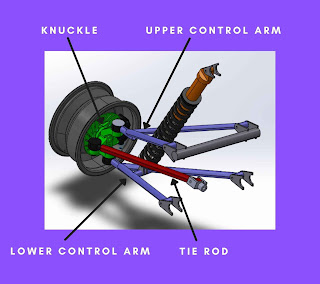Basic definition
Bump steer occurs when the wheels steer themselves without input from the steering wheel while going through a bump(or uneven road).
It's most important for the vehicle to have the least bump steer when going over a bump or an uneven road.
Also, a huge bump steer in your vehicle can be dangerous and can make the vehicle unstable in many situations.
What causes bump steer?
As the car or vehicle goes over a bump, the wheel moves vertically up and down. This vertical movement causes wheels to steer themselves.
In order to understand bump steer completely you will need to understand the whole assembly of steering and suspension system.
As steering and suspension system are not independent to each other, slight change in steering can affect your suspension system and vice versa.
Rack and pinion steering system
Rack and pinion type of steering system is the most basic and simpler type of steering system which used in almost all street and passenger vehicles.
In which a rack and pinion gear mechanisms is there, which converts the rotational motion of steering wheel into translatory motion of tie rods.
As steering wheel rotates, it thereby moves tie rods linearly and the tie rods were connected to the control arm which is then connected to tyres through the steering knuckle.
So, linear motion of tie rods steer vehicle right and left.
Suspension system
As the vehicle goes through the bump, the suspension system means the dampers , shockers and control arms move vertically along with the tyre.
The root cause of bump steer is tie rod and control arm unequal geometry. Due to this both tie rod and control arm travel in different arcs and this causes the tie rod to apply more pressure to the wheel and eventually it causes our tyres to steer on their own.
Because during the bump, both tie rod and control arm have to travel same distance vertically and if their length will be different they have to move in different arcs in order to travel same vertical distance.
Hence, unequal geometry of control arm and tie rod can lead to bump steer.
Rules to minimize bump steer
- Tie rod lengths must be set.
- The tie rod should be designed in such a way that the tie rod inner joint must lie in the imaginary line passing through the two control arm inner pivot points.
- Also, the tie rod outer joint must lie in the imaginary line passing through the two control arm outer pivot points.
- Tie rod angle needs to be adjusted such that the imaginary line along the tie rod length must pass through the instantaneous centre.











0 Comments